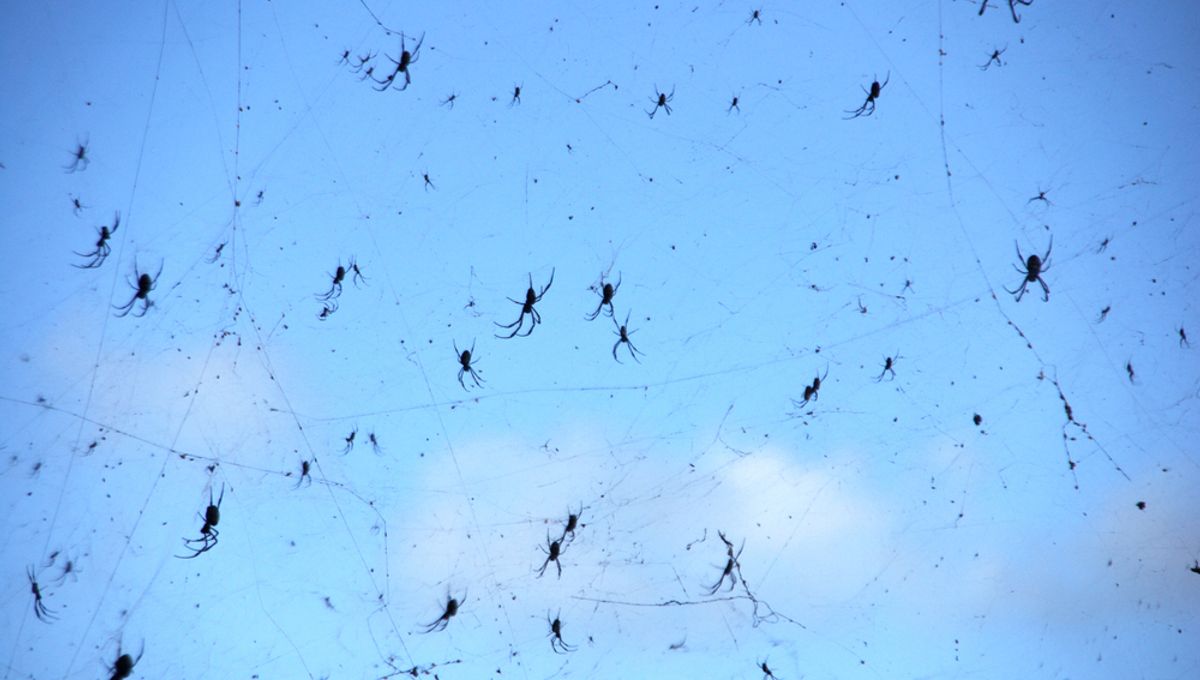
There are some places spiders belong. In a cave? Sure. In your basement? Unavoidable. In the deep sea? Weird, but why not? But falling from the sky like precipitation? That’s a big fat nope, absolutely not, no way, right?
Well, we’re sorry to have to inform you, but arachnid showers are not a thing of fiction; sometimes it really does “rain” spiders. The bizarre phenomenon has been documented more often than you might hope, from Australia to Brazil, as creepy crawlies rain down and instill terror in local arachnophobes.
So, what in the Charlotte’s Web is going on?
Also known as “angel hair”, because of the silky threads the spiders leave behind, “spider rain” is in fact a mass ballooning event. These events see spiders take to the skies, climbing to the highest points of their habitat and deploying silk threads so they can soar through the air.
“It’s a reverse-parachute effect – they’re going from the ground into the air,” entomologist Robb Bennett told National Geographic in 2015. “It’s awe-inspiring.”
Ballooning is typically seen in young spiders, as well as small adults, as they launch themselves away from their hatching site to find a home with less competition from other arachnids. The drive to flee the nest is understandable, but it’s not without risk – most spiders will die during the journey, either at the hands of predators or because of rogue weather conditions. Still, they persist.
“Ballooning is a not-uncommon behavior of many spiders. They climb some high area and stick their butts up in the air and release silk. Then they just take off,” Rick Vetter, a retired arachnologist, told Live Science. “This is going on all around us all the time. We just don’t notice it.”
It’s unusual for millions of spiders to all embark on their journey to independence at the same time, and to do so in the same place, hence why we often miss it. But sometimes the weather messes the arachnids’ timings up, and it rains spiders.
“What’s thought to be going on is that there’s a whole cohort of spiders that’s ready to do this ballooning dispersal behavior, but for whatever reason, the weather conditions haven’t been optimal and allowed them to do that. But then the weather changes, and they have the proper conditions to balloon, and they all start to do it,” biology professor Todd Blackledge explained to Live Science.
The wingless arachnids can “fly” thousands of miles using this method, and can even do so when there’s little to no wind. As for how they do it, the spiders rely on air currents and electric fields.
“Previously, drag forces from wind or thermals were thought responsible for this mode of dispersal,” explained Dr Erica Morley, lead author of a 2018 paper exploring ballooning, explained. “But we show that electric fields, at strengths found in the atmosphere, can trigger ballooning and provide lift in the absence of any air movement. This means that electric fields as well as drag could provide the forces needed for spider ballooning dispersal in nature.”
Even the most ardent arachnophobes have to admit that’s pretty damn clever – though the concept of “spider rain” may be beyond the pale. However, it’s got nothing on the fact that some spiders vomit their victims to death. We’ll leave you to stew on that for a bit.
Source Link: “Spider Rain”: The Bizarre Phenomenon That’ll Send Arachnophobes Into A Spin